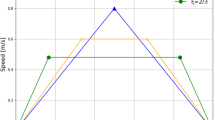Abstract
This paper focuses on the optimization of a novel angular rate sensor element based on the Coriolis force working principle. The device is resonantly excited and consists of two mechanically coupled oscillators representing the drive and the sense unit. In order to minimize energy losses during operation, the device employs a single point suspension to the substrate. This is especially advantageous when choosing an antiphase torsional motion for the sense mode. Furthermore, thermally-induced stress resulting in undesired drift effects of the device is minimized. The excitation frequency of the electrostatic drive unit was chosen to be in the range from 10 to 15 kHz, according to automotive requirements. The optimization process started with a complete parameterization of the sensor geometry, providing the basis for an analytical model. This was set up via the so-called deformation algorithm, applying the Ritz method. Next, the eigenfrequencies and mode shapes of the sensor were calculated analytically and compared with FEM results. The inclusion of the Coriolis force induced response of the sense unit yielded signal values from the differential capacitive pickup. An advanced hill climbing algorithm was used, varying two geometrical parameters simultaneously in such a way that the difference in drive and sense frequencies was kept at a constant value of 200 Hz. Based on this procedure an optimized design was found with an increase in signal level of about 450% as compared to earlier versions (e.g. from 3 to 17 aF/°/s). In a last step, fabrication related perforation holes which are typical for surface micromachined devices were included in the model. For this configuration, a frequency matching step was performed by FEM calculations. Resulting stiffness values were fed into the analytical model yielding a final output signal of the sensor of 16 aF/°/s.







Similar content being viewed by others
References
Apolstolyuk VA, Logeeswaran VJ, Tay FEH (2002) Efficient design of micromechanical gyroscopes. J Micromech Microeng 12:48–54
Fischer U, Stephan W (1993) Mechanische Schwingungen (in German), 3rd edn. Fachbuchverlag, Leipzig Köln
Guenthner S (2006) Entwurf und Charakterisierung von mikromechanischen Drehratensensoren in Silizium. Ph.D. thesis (in German), Saarland University
Han JS, Kwak BM (2001) Robust optimal design of a vibratory microgyroscope considering fabrication errors. J Micromech Microeng 11:662–671
Kranz M, Burgett S, Hudson T, Buncick M, Ruffin P, Ashley P, McKee J (2003) A wide dynamic range silicon-on-insulator MEMS gyroscope with digital force feedback. In: Proceedings of the 12th international conference on solid-state sensors and actuators, transducers’03, pp 159–162
Kulygin A, Gergen M, Schmid U, Seidel H (2007a) Modelling and simulation of a micromachined angular rate sensor with optimised mechanical suspension, SPIE-Conference “Microtechnologies for the New Millenium”, vol 6589, pp 65890O, 2.5.–4.5, Gran Canaria, 2–4 May 2007
Kulygin A, Schmid U, Seidel H (2007b) Characterization of a novel micromachined gyroscope under varying ambient pressure conditions. Sens Actuators A (in press)
Markert R (2006) Strukturdynamik (in German), lecture notes, Technical University of Darmstadt
Ongkodjojo A, Tay FEH (2002) Global optimization and design for microelectromechanical systems devices based on simulated annealing. J Micromech Microeng 12:878–897
Rose M (1998) Entwicklung eines mikromechanischen Drehratensensors aus Silizium, Ph.D. thesis (in German), Technical University of Berlin
Schiehlen W, Eberhard P (2004) Technische Dynamik—Modelle für Regelung und Simulation (in German), 2nd edn. B. G. Teubner, Stuttgart
Schreiber U, Schneider M, Rowe CH, Stedman GE, Schlüter W (2001) Aspects of ring lasers as local earth rotation sensors. Surv Geophys 22:603–611
Sparks DR, Huang X, Higdon W, Jonson JD (2006) Angular rate sensor and accelerometer combined on the same micromachined CMOS chip. Microsyst Technol 4:139–142
Sullivan KA, Jacobson SH (2000) Original hill climbing algorithms for discrete manufacturing process design optimization problems. Discrete Event Dyn Syst Theor Appl 10:307–324
Waller H, Schmidt R (1989) Schwingungslehre für Ingenieure—Theorie, Simulation, Anwendungen. (in German) Wissenschaftsverlag Mannheim/Wien/Zürich
Yazri N, Ayazi F, Najafi K (1998) Micromachined inertial sensors. Proc IEEE 86:1640–1659
Yuan W, Chang H, Li W, Ma B (2006) Application of an optimization methodology for multidisciplinary system design of microgyroscopes. J Microsyst Technol 12:315–323
Zaman MF, Sharma A, Ayazi F (2006) High performance matched-mode tuning fork. IEEE proceedings of the 19th international conference on micro electro mechanical systems MEMS’06, Istanbul, pp 66–69
Author information
Authors and Affiliations
Corresponding author
Rights and permissions
About this article
Cite this article
Kulygin, A., Gergen, M., Schmid, U. et al. Optimizing the performance of a Coriolis-based angular rate sensor applying an analytical approach. Microsyst Technol 14, 517–525 (2008). https://doi.org/10.1007/s00542-007-0442-x
Received:
Accepted:
Published:
Issue Date:
DOI: https://doi.org/10.1007/s00542-007-0442-x




